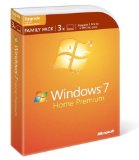![]() Save time and avoid frustration with these smart and easy ways to setup and print your Excel worksheets.
Save time and avoid frustration with these smart and easy ways to setup and print your Excel worksheets.
Customizing the Print Area
By default, an entire worksheet is printed in Excel unless you indicate a specific print area. To limit the printed area:
- Highlight the cells you want to print
- Choose File > Print Area > Set Print Area. The new print area remains in place until changed.
To clear the current print area, pick File > Print Area > Clear Print Area.
Quick Print of a Range of Cells
If you only need to temporarily print a range of cells, just highlight the range and choose File > Print. Under the category, Print What (bottom-left corner), pick Selection and choose OK.
The Hidden View-Page Break Preview
Most Excel users have yet to discover the Page Break Preview, another great way to setup the print area in a worksheet. Simply choose View > Page Break Preview. A prompt may appear as a reminder. (This option is also available from the Print Preview view).
The visible white area in the Page Break Preview is the print area which can be adjusted by moving the solid blue boundary lines. The dashed lines show where page breaks will occur; these can be moved to adjust and create manual page breaks which display as solid blue lines.
This view is also a handy way to see how your worksheet breaks out into pages; notice the gray page labels such as Page 2 in this view. You can perform all worksheet actions from the Page Break Preview. I usually change the Zoom (found on the right side of the Standard toolbar) to 100%. To change back to the previous view, pick View > Normal.
Set Your Own Page Breaks
Here's another way to control page breaks. Select the row or column where you want to create a new worksheet page; the break will appear above the highlighted row or to the left of the selected column. Next, choose Insert > Page Break. Page breaks display as dashed lines.
Print Headings on Every Page Do you want to print the same rows or columns on every page? Printing headings is easy with Print Titles. All you need to do is pick File > Page Setup and choose the Sheet tab. Under the Print Titles option, choose Rows to repeat at top and/or Columns to repeat at left. Finally, click into the actual spreadsheet and highlight the row(s) and/or column(s) that you want to see on every page. Finish with OK or other print settings.
Fit to Page
Unlike Word documents, content is not limited by the paper size or orientation. A worksheet can be split into as many pages as needed to display the content but sometimes you might want to fit all data into one page by height or width. To do this:
- First choose File > Page Setup, set margins to the smallest size that will work for your layout. Change paper size and orientation if you want.
- Next, select the Page tab and under the Scaling category pick Fit to. For instance, if you want to fit all data columns on one lengthwise page, change orientation to landscape and choose Fit to 1 page wide by 999 pages tall. This setting won't stretch pages to 999 pages but will make sure that a low value won't accidentally shrink the pages to a much smaller size.
Another option under Scaling is to adjust the size to a percentage of the normal size. Important Note: with Scaling other than 100%, manual page breaks are ignored.
Easy Page Setup on Multiple Worksheets
A few years ago, I was heading down the hall at a client's building when one of the managers pulled me into his office. He had just spent the entire morning repeating the same page setup choices for each of the worksheets in a large Excel workbook. "Is there an easier way?" he asked. You bet. Here's what you want to do to apply an identical print page setup to a set of worksheets: group them. Two of the ways to group worksheets are:
- To highlight all of the worksheets in a workbook, right-click on any of the sheet tabs and left-click on the option Select All Sheets.
- To select only specific worksheets, hold down the [Ctrl] key while clicking on each of the worksheets that you want to group together.
With either technique, you will see [Group] display in the title bar next to the workbook name. Now for the easy part, choose File > Page Setup and pick each of the options that you want for the worksheet layout including margins, headers and footers, and paper size.
Tip or disaster? Once you are finished with the Page Setup, make sure that you immediately ungroup the worksheets because anything else that you do will also be a part of each worksheet including data entry, editing and formatting. To ungroup the worksheets, just right-click on any worksheet tab and pick Ungroup Sheets. Confirm that the [Group] label no longer displays in the title bar.
Simplify your next Excel project with these printing shortcuts.
Author - © Dawn Bjork Buzbee is The Software Pro® and a certified Microsoft Office Expert and Microsoft Office Specialist Master Instructor. Dawn shares smart and easy ways to effectively use software and technology through her work as a software speaker, trainer, and consultant. Discover more tips, tricks, tools, and techniques at http://www.SoftwarePro.com



Comments on Microsoft Excel - Easy to Expert Printing Tips
elvira @ 4:19 pm
I inserted 4 lines in excel. Print preview ok, but when printed the
lines move up.